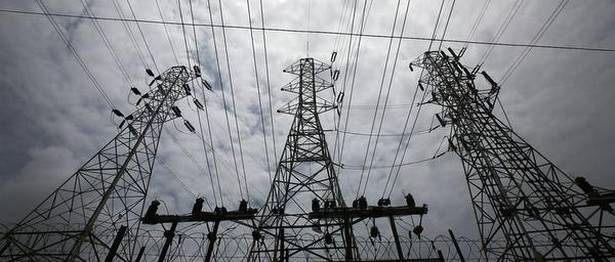The Transmission and Distribution (T&D) loss and the Aggregate Technical and Commercial (AT&C) loss are often quoted metrics to assess the health of the electricity distribution sector.
High losses could be due to low investment in the network, poor maintenance or theft. An increase in loss implies an increase in costs and consequently consumer tariffs. An analysis of six large States in India shows that a one percentage point (p.p.) increase in T&D loss results in a ₹200-₹400 crore annual increase in costs for the electricity distribution companies or Discoms in each State.
Given its impacts, electricity regulatory commissions set targets for loss reduction. There is also a commitment to loss reduction under the Ujjwal Discom Assurance Yojana (UDAY), a bailout scheme worth ₹5 lakh crore, aimed at ensuring financial viability of Discoms. Under this scheme, target specification and monitoring of losses take place on a division-wise basis. Loss reduction is also tracked under the Integrated Power Development Scheme (IPDS), a union government programme worth ₹32,000 crore to strengthen network infrastructure.
The annual loss reduction targets decided by regulators and under central government programmes are in the range of 0.25 to 5 percentage points in most States. Loss assessment is affected by two long-standing metering challenges in the sector. Of these, one relates to the large presence of unmetered users whose consumption is not measured but estimated based on assumptions.
The second is the lack of accurate metering infrastructure not only in the distribution network but also the transmission system. Keeping aside the impact of these issues, this article highlights that the losses could vary by up to 4 percentage points depending merely on the methodology used for calculation. Hence, it is important to look at the underlying methodology and not just the reported number often quoted in headlines.
T&D loss is calculated as the difference between input in the T&D network and sales to consumers. AT&C loss is calculated as the difference between the energy input in the distribution network and revenue collected for the same. The variation in losses due to the methodology adopted primarily depends on the treatment of four factors detailed in rest of this article.
Alternate supply options
Driven by rising Discom tariffs, many industrial and commercial enterprises have been meeting their demand through alternate supply options such as open access or captive generators. This demand is already more than 20 per cent of the Discom sales in many States and will continue to grow.
Even though these consumers use the network, the T&D loss in the network is typically estimated without accounting for such demand. This treatment overestimates T&D loss by 2-3 percentage points. However, it does not change the AT&C loss calculated as this metric focuses only on the inputs and losses attributable to the Discom’s demand.
Franchisees are appointed to manage billing, revenue collection and capital expenditure in high loss pockets of the Discom. While estimating the Discoms’ T&D loss, a franchisee is typically treated as a single consumer drawing power from the State transmission network.
This is not reflective of how energy is handled in the system as the Discom consumers in the franchised area are connected to the distribution network and thus are also subject to distribution losses. This assumption leads to an under-estimation of T&D as well as AT&C loss by 1-4 percentage points. Given this treatment, it is quite possible for a Discom to show a dramatic, although notional reduction in losses simply by appointing franchisees in multiple circles.
Depending on whether energy inputs are considered in the transmission or distribution network, there could be variation in losses calculated.
Possibly due to a historical precedent, existing methodologies assume that all short-term and renewable energy procurement take place only within the State transmission network.
However, purchase from outside the State and the generation of renewable energy in the distribution network has been increasing in the recent past. Not accounting for this change, results in an over-estimation of T&D loss 0.03-0.12 percentage points and an over-estimation of AT&C losses by 0.1-0.2 percentage points.
Along with distribution loss, AT&C loss is also dependant on the Discom’s collection efficiency. Collection efficiency is expressed as the ratio between the revenue collected for sale of power by the Discom and the revenue billed for the same. The calculation methodology prescribed by the Central Electricity Authority accounts for revenue collected during the year as well as past receivables.
Varying definitions
In sharp contrast, the definition of collection efficiency on the National Power Portal managed by the Ministry of Power is only concerned with the revenue billed for the current year and explicitly excludes arrears.
For a Discom which has had significant arrears in the past but has managed to increase collection for current and past receivables, there could even be a 10 percentage point variation in estimation of collection efficiencies depending on the methodology considered.
Currently, it is not clear which methodology is used by Discoms to calculate collection efficiency for reporting AT&C loss. Keeping aside this dramatic possibility, variation in distribution loss alone due to changes in methodology is significant enough to meet the annual AT&C loss reduction target, as specified under UDAY for 19 States.
Given these wide-reaching implications, it is important to have a standardised loss calculation methodology which transparently accounts for energy as handled in the system. Such a methodology should also account for recent sector developments.
The Centre in consultation with State governments, regulators and Discoms should publish a model calculation methodology which can be adopted across States after extensive public consultation. Only then will using these metrics for the purposes of setting policy targets, making comparisons across States and for the assessment of progress under central sector programmes hold any merit.[BusinessLine]
















Add comment